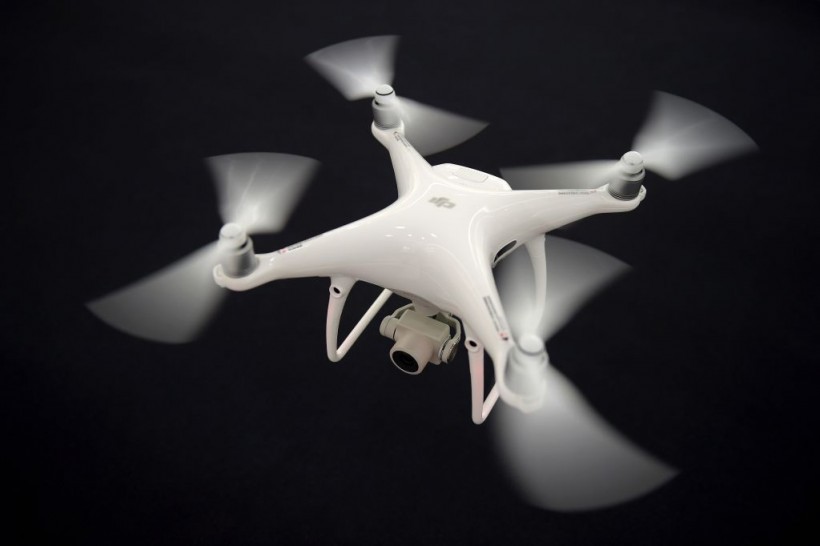Beijingwalker
Senior Member
- Jan 27, 2024
- 69,455
- 37
- Origin

- Residence

- Axis Group

Chinese University Unveils Multi-Camera Vision Sensor Enhancing Accuracy for Robots, Drones
Beihang University introduces a groundbreaking multi-camera vision sensor
John Lopez, Tech Times 19 February 2024, 10:02 am
Researchers at Beihang University in China have recently unveiled a revolutionary multi-camera vision sensor that promises to improve the accuracy and capabilities of robots and drones.
This breakthrough sensor has the potential to transform industries that rely on precise visual measurements, including autonomous vehicles and motion-sensing technology.

(Photo : NICOLAS ASFOURI/AFP via Getty Images)
In this picture taken on May 11, 2017, a drone flies in the showroom of the DJI headquarters in Shenzhen. China drone-maker DJI is betting on flying machines that shoot pesticide instead of photos to fend off growing competition in the global remote-controlled aircraft market. The world leader in the civilian drones sector is switching its focus from leisure photography to more professional uses for its unmanned aerial vehicles, and it sees agriculture as the future for the burgeoning industry.
Traditionally, sensors used in robotics and drones were limited by the field of view (FOV) of individual cameras, making it difficult to collect accurate data. However, Beihang University's team has broken through these barriers with their innovative multi-camera differential binocular vision sensor.
Inspired by sophisticated camera modules found in mobile phones, this cutting-edge sensor consists of a central, high-resolution camera and four peripheral auxiliary cameras.
In a study published in Optics & Laser Technology, the researchers explained how these cameras work together to form a coordinated system similar to a pair of binoculars, allowing for a wider field of view while maintaining measurement accuracy.
Fuqiang Zhou, co-author of the paper that introduced the sensor, explained to TechXplore that the aim was to meet the high-precision demands of environment perception in unmanned aerial vehicle detection, robot navigation, and autonomous driving.The researcher adds that by leveraging the principles of high-precision binocular vision measurement, they have achieved a breakthrough in sensor technology.
The multi-camera sensor's unique design optimizes spatial arrangement, measurement range, and accuracy, resulting in precise three-dimensional measurements.
Through rigorous testing, the researchers demonstrated that their sensor outperforms traditional binocular cameras by providing a wider field of view and higher measurement accuracy.Wide-Ranging Applications
This breakthrough has far-reaching implications for multiple industries. In the context of intelligent driving systems, increased sensor accuracy could significantly improve navigation and collision avoidance capabilities.
Similarly, in robotics, precise sensor measurements allow for more efficient and reliable operation in dynamic environments.Moreover, the applications go beyond robotics and drones. The sensor's versatility makes it suitable for use in a variety of motion-sensing devices, improving its ability to detect and track movement with unparalleled precision. From security systems to virtual reality platforms, the possibilities are endless.
Looking ahead, the researchers hope to see their sensor widely integrated into autonomous systems, paving the way for safer and more efficient technologies.
As Fuqiang Zhou stated, "In the field of vision measurement, binoculars are the best choice for high precision." With our sensor, we achieved high-precision vision perception with a wide field of view, setting a new standard for intelligent unmanned systems."The introduction of this multi-camera vision sensor represents a significant step forward in the advancement of robotics, drones, and other technologies. With its ability to improve accuracy and broaden the field of view, this innovative technology has the potential to revolutionize industries and shape the future of automation.

 Military Watch Forum
Military Watch Forum